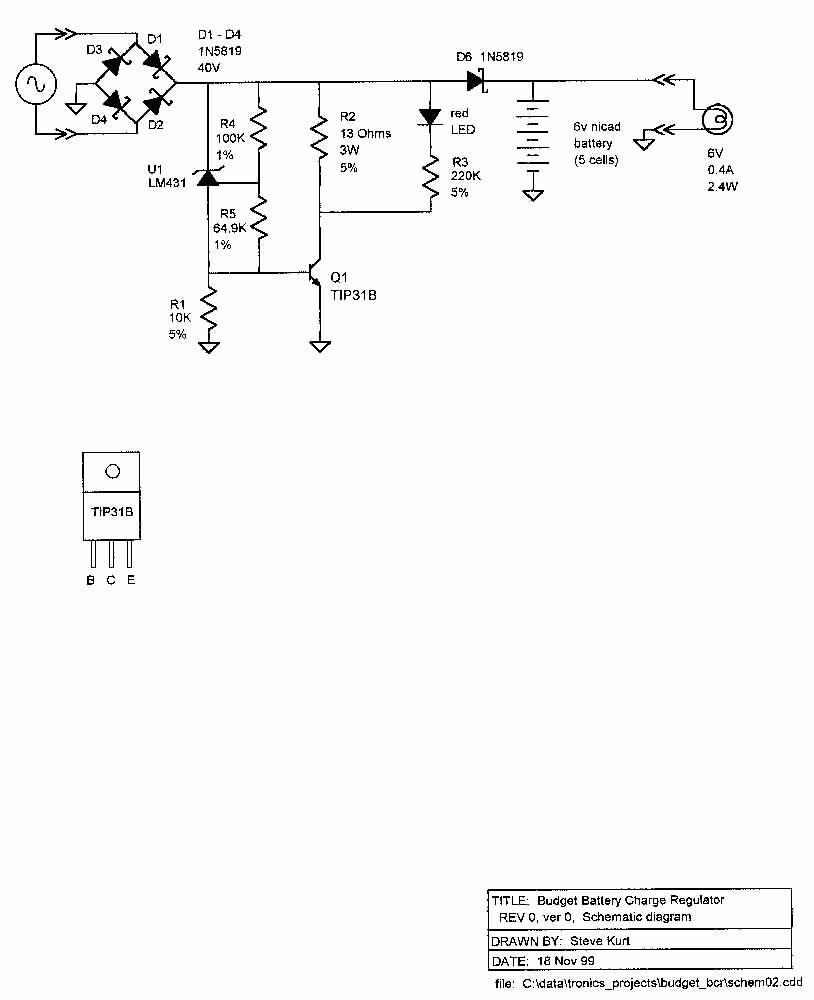This is the circuit I am trying to build.
Dynamo (6V/3W AC) --> bridge rectifier (100V/4A) --> Capacitor (2200uF electrolytic, 35v) --> Capacitor (470uF tantalum, 16v) --> AP1184T5 (15V/4A DC) --> Capacitor (470uF tantalum, 16v) --> Battery Charger and lights
The circuit schematic and instructions for building it: http://www.techible.net/2012/06/bicycle-dynamo-usb-charger/
Datasheet for the voltage regulator: http://www.diodes.com/datasheets/AP1184.pdf
Look at page 3 of the datasheet for the circuit used to adjust the output voltage.
My problems are
1) Figuring out how to connect the Vin and the Vctrl pins.
2) Equation to calculate resistor values needed to output 13.5V or greater.
Problem 1)
Vin: The input of the regulator
Vctrl: This pin is the supply pin for the internal control circuit as well as the base drive for the pass transistor. This pin must always be higher than the Vout pin in order to regulate the device.
Can I simply connect the Vctrl pin to the Vin pin?
Problem 2)
I need the voltage regulator to output 13.5V DC or more. What resistor values do I need?
The equation
says R1 should be 1ohm and R2 10ohm. Is this the equation I should be using? The datasheet lists multiple equations, one is on page 3 in the middle and the other is on page 6 near the top.
Dynamo (6V/3W AC) --> bridge rectifier (100V/4A) --> Capacitor (2200uF electrolytic, 35v) --> Capacitor (470uF tantalum, 16v) --> AP1184T5 (15V/4A DC) --> Capacitor (470uF tantalum, 16v) --> Battery Charger and lights
The circuit schematic and instructions for building it: http://www.techible.net/2012/06/bicycle-dynamo-usb-charger/
Datasheet for the voltage regulator: http://www.diodes.com/datasheets/AP1184.pdf
Look at page 3 of the datasheet for the circuit used to adjust the output voltage.
My problems are
1) Figuring out how to connect the Vin and the Vctrl pins.
2) Equation to calculate resistor values needed to output 13.5V or greater.
Problem 1)
Vin: The input of the regulator
Vctrl: This pin is the supply pin for the internal control circuit as well as the base drive for the pass transistor. This pin must always be higher than the Vout pin in order to regulate the device.
Can I simply connect the Vctrl pin to the Vin pin?
Problem 2)
I need the voltage regulator to output 13.5V DC or more. What resistor values do I need?
The equation
Code:
1.25 * (1 + R2/R1)

 Back to the drawing board.
Back to the drawing board.